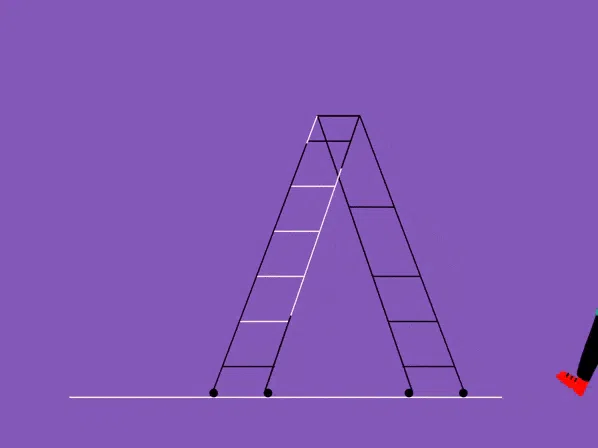6 Video Transitions Effects: Examples and Tips
You’ve probably felt the tension build up while watching a movie. But have you ever wondered how to achieve it? One way to show the changing moods, events, atmospheres, and times of action is through video transitions.

“From a visual effects perspective, there are certain types of films that just cannot be told without visual effects”
Digital Domain’s Kelly Port, the film’s Visual Effects Supervisor
In this article, we will describe the basic types of video transitions. If you want to make your video more dynamic, then keep reading!
What are Video Transition Effects?
When editing a clip or movie, you need to adjust the transition from one frame to another. Often the frames are simply changed. But what if you want to use frame transitions to convey a new mood? If the director needs to emphasize an event, a video transition will be appropriate.
There are two ways to make a video transition – during the filming process or editing. Transitions are good for the audience’s perception of the film, so you should consider this part of the video and use it in your product.
Types of Video Transitions
In YouTube videos, TV shows, and movies, you’ve probably seen transitions video before. These are the most common and popular video transition types. Let’s take a closer look at each of them with visual examples.
Wipes
Wipes is a popular video transition that helps create a tense atmosphere and show a change in location or time.
It is achieved by shifting one frame from another, thereby revealing the next scene to the audience. Wipes help convey the dynamic mood of the film at that moment. For example, here is a video of all such transitions from Star Wars.
Fade in/out
Remember when a frame smoothly turns into a white or black? This transition is called Fade in/out. Most often, filmmakers use it to show that a long period has passed. Or the death of characters.
It is a very popular transition that can be used to indicate the end of a movie or an important storyline. As an example, you can see this cut with Fade in/out.
Dissolves
Dissolution is used by filmmakers when the task is to show the connection between two storylines or scenes.
There are slow and fast dissolves. The longer the dissolve lasts, the longer the interval of time that is usually in the story (according to the director’s intention, of course). Here’s a cut of the use of dissolves video transition in popular movies.
Whip Pan
This type of transition is used for frame changes and within a single frame for transitions between locations. The camera moves quickly, and thus the effect of a fast frame change is created.
If you want to achieve maximum dynamism or comicality, you need to use this effect in your videos. The Whip Pan from this clip can inspire you.
Jump Cuts
You can use Jump Cuts to convey the characters’ long wait. Characters seem to jump from place to place, appearing in different parts of the frame. It is usually used to convey multitasking or waiting. The best transition video example is “Little Shop of Horrors” (1986) by Frank Oz.
Match Cut
It is probably the most interesting of the transitions between frames. The frame seems to approach some object (it could be a reflection in a mirror or a lake or the hero’s eyes). Then a new frame appears from complete darkness after it is fully approached.
Filmmakers also use this type of transition to build up tension or show the philosophical mood of the film’s characters.
If you want to implement such a transition, you can be sure that it will add even more style to your video. Here are video transitions examples of match cuts.
Video Transition Tips
Here, we’ve gotten acquainted with the main types of the best video transitions you can use to create the appropriate mood in your videos. We want to share with you some helpful tips on how and where to use transitions video editing.
Spoiler: video transitions will certainly add dynamism to your video, but you don’t need to use them throughout the video. Allow the frames to replace each other without transitions.
Use Transitions for Passing of Time or Change of Direction/Mood
The main transition meaning in video editing is to show the viewer a change in atmosphere. You can also make it easier on your director and use transitions to change periods.
However, if you don’t have the task of doing any of the above, think about whether you really need to use types of transition in video editing. Don’t go overboard with this effect. Numerous transitions can distract from the main narrative.
Keep it Smooth!
Quick video transition will attract a lot of attention. Act slowly and smoothly! Different types of video transitions between frames should be as natural as possible and fit into the overall plot and atmosphere.
Remember that the main thing in your movie or video is the plot and narration. So use editing transitions very carefully!
Keep it Simple!
All things are difficult before they are easy.
Don’t overcomplicate it! The simpler the video transitions meaning, the easier it will be for the viewer to perceive it correctly.
Do you want to make perfect-looking transitions in your videos?
Well, now you’re sure to pay attention to video transition effects while watching movies! Try it. This experience will help you in creating quality and interesting videos.
And if you want to get good video clips now, we at Explain Ninja Studio are ready to help you! Our experienced professionals are ready to create great video content for your purposes.


